A healthy diet—made easier with meal delivery services—and lifestyle plays an important role in prediabetes management by regulating blood sugar levels. According to the Centers for Disease Control and Prevention, 96 million American adults have prediabetes, but more than 80% are unaware of it (1).
You get a prediabetes diagnosis if your fasting glucose level is between 100 and 125 mg/dL. If left unmanaged, prediabetes can progress to type 2 diabetes, a chronic condition where insulin is not regulated effectively.
So, let's explore prediabetic foods that can easily be incorporated into your diet.
» Learn the top 10 ways diabetics can benefit from vegan diets.
1. Dark Chocolate—For Antioxidants
Craving a decadently delicious dessert? You can try dark chocolate instead of traditional high-sugar desserts that will shoot up your blood sugar levels.
Dark chocolate is rich in flavanols. These are antioxidants that help protect against free radical damage. They also improve insulin resistance, which can prevent diabetes (2).
Dark chocolate has a low glycemic index. This means it raises blood sugar levels much slower than high-glycemic foods.

2. Avocado—For Weight Management
Avocado is a great alternative to high-carbohydrate foods, such as white bread or sugary snacks, which spike your blood sugar levels significantly. It is rich in healthy fats and fiber for clean eating. This filling low-carb food for diabetes can slow down the absorption of glucose into your bloodstream, leading to improved blood sugar control.
Avocado can help manage prediabetes since it contains monounsaturated fats that help:
- Reduce inflammation
- Increase fat burning
- Improve insulin sensitivity
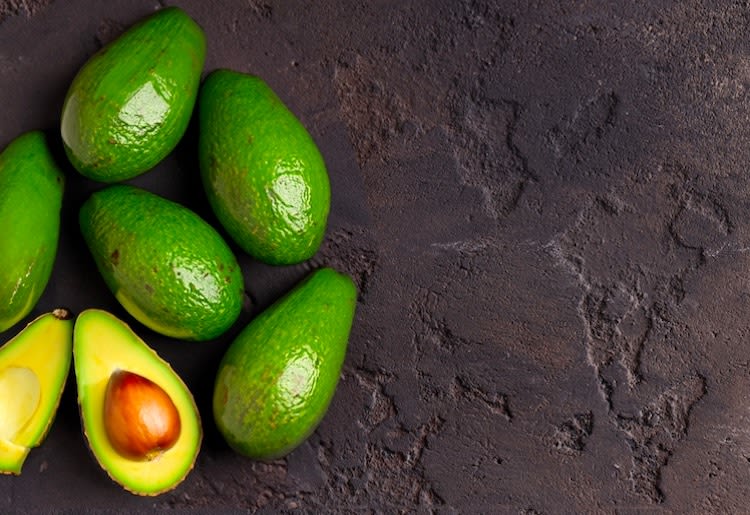
3. Nuts—For Improving Heart Health
Nuts are ideal for handling cravings or if you feel like snacking between meals.
Nuts such as walnuts, cashews, and almonds are high in protein, healthy fats, and fiber. They can help:
- Reduce low-density lipoprotein (LDL) cholesterol—the cholesterol associated with heart disease
- Improve blood pressure
- Decrease inflammation in the body
Researchers have observed that nut consumption can improve insulin sensitivity and blood sugar control in those with prediabetes or diabetes (3).
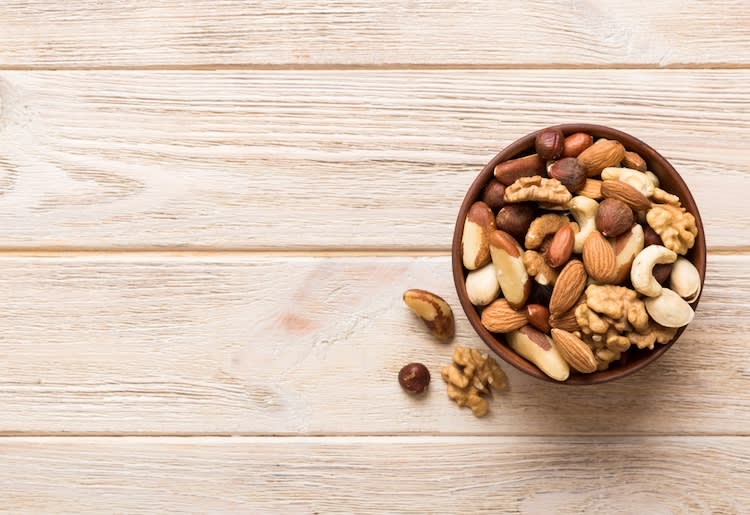
4. Leafy Greens—For High Fiber
These are excellent alternatives to starchy vegetables, such as potatoes and corn.
Leafy greens, such as spinach, kale, and arugula, are low in calories and carbohydrates. These are also rich in vitamins and minerals, such as vitamin K, vitamin C, and potassium, which are good sources of antioxidants.
Adding these fiber-rich low-calorie foods to a diet will help people with prediabetes manage their blood sugar levels and reduce the risk of developing type 2 diabetes (4).
» Keeping your meals low-carb? Take a look at the foods to avoid on a low-carb diet.

5. Berries—To Reduce Inflammation
Looking for sugar-free snack ideas? Berries are a great alternative to candy and pastries.
These fruits are low in calories and sugar and high in fiber and vitamins. Berries are rich in antioxidants such as polyphenols, which improve insulin secretion and modulate glucose release (5).
Chronic inflammation is a common occurrence in people with prediabetes and diabetes. However, the antioxidants in berries can help reduce inflammation and improve overall health.

6. Whole Grains—For Improving Gut Health
You can have whole grains such as brown rice, quinoa, and whole wheat bread instead of white rice or pasta. These foods are nutrient-rich—including B vitamins and iron—and can help regulate your blood sugar levels and circulation.
Whole grains contain prebiotics, which feed the beneficial bacteria in your gut. This promotes a healthy gut microbiome. Dysbiosis or a disrupted gut microbiome is associated with the development of diabetes (6).
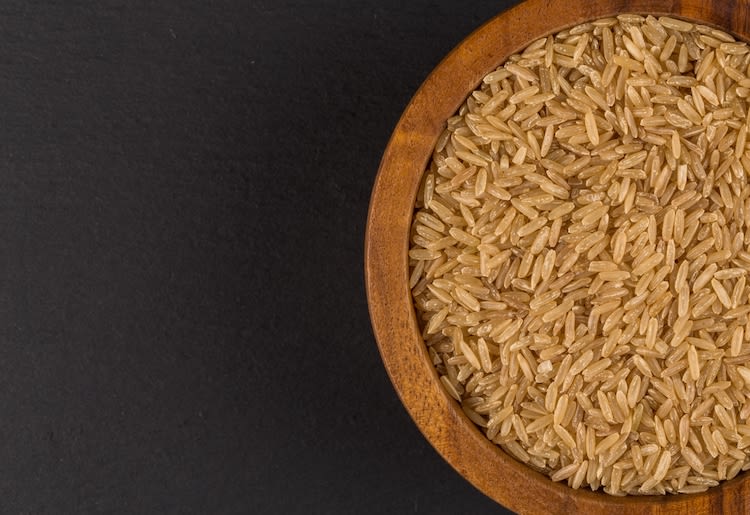
7. Greek Yogurt—For Bone Strengthening
Greek yogurt can be used as a replacement for dips, salad dressings, or heavy creams in some desserts. This thick treat—particularly the non-fat version—is rich in calcium and probiotics and low in sugars. It is a strong source of protein and can facilitate bone health.
Greek yogurt is a great option for those with prediabetes or diabetes because of its low sugar and carbohydrate levels.
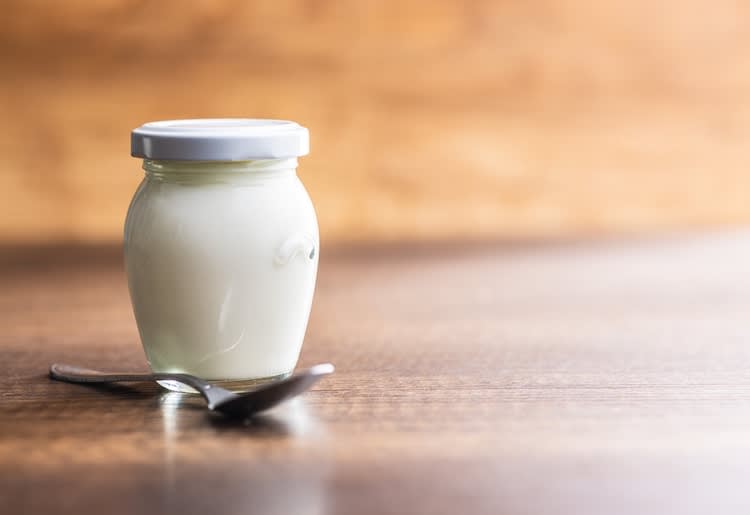
8. Legumes—For Heart Health
If you are prediabetic, you should add more legumes to your diet in place of high-starch foods such as pasta or rice. Legumes are associated with a reduced risk of heart disease (7). They may help lower LDL cholesterol levels and reduce blood pressure.
Chickpeas, lentils, and black beans are all great sources of plant-based protein, fiber, and complex carbohydrates. Their fiber content lowers their glycemic index and helps control your blood sugar levels from spiking too much.
» Discover which foods to avoid if you have diabetes.
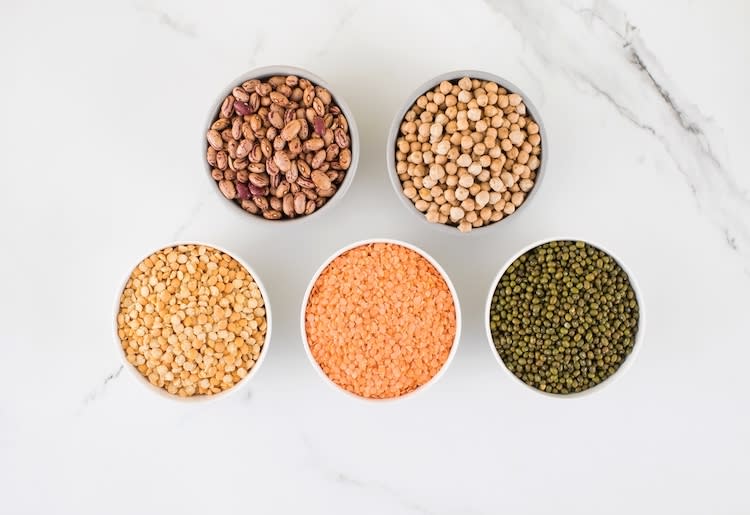
9. Salmon—For Omega-3 Fatty Acids
Salmon is a healthier alternative to red meat and a delicious source of protein and vitamin D. Red meat has a high saturated fat content, which can lead to higher weight gain and impact diabetes control and prevention.
Salmon is low in saturated fat making it a heart-healthy option for those with prediabetes or diabetes. The omega-3 fatty acids in salmon help improve insulin sensitivity and inflammation by reducing endoplasmic reticulum (ER) stress, which fosters insulin resistance development (8).

10. Sweet Potatoes—To Support Immune Function
Sweet potatoes are a good source of complex carbohydrates. It offers you plenty of fiber and vitamin A. Have them instead of regular potatoes or meals with refined flour, noodles, or pasta. Sweet potatoes are less likely to cause a rapid spike in blood sugar levels as they have a lower glycemic index in comparison.
The fiber and antioxidants in sweet potatoes both play roles in improving insulin sensitivity. And—because of high levels of nutrients like calcium, iron, and potassium—these boost your immune system, making them ideal for those with prediabetes.

Managing Prediabetes Through a Healthy Lifestyle
Being overweight is a major risk factor for developing type 2 diabetes (1). To reduce your risk, you should maintain a healthy weight with regular exercise and a balanced diet. Also make sure to avoid processed foods, sugary drinks, and saturated fats.
Meal delivery services with diabetes-friendly plans can help you stick to a conscious diet. So, if you're ready to take your health into your own hands, try services like Nutrisystem and Freshology for tailored meal delivery options.
» Looking for choices? Check out the best diabetic meal delivery plans.
References
- https://www.cdc.gov/diabetes/basics/prediabetes.html
- https://www.ncbi.nlm.nih.gov/pmc/articles/PMC4696435/
- https://www.ncbi.nlm.nih.gov/pmc/articles/PMC7307437/
- https://www.cdc.gov/diabetes/library/features/role-of-fiber.html
- https://www.ncbi.nlm.nih.gov/pmc/articles/PMC6014790/
- https://www.ncbi.nlm.nih.gov/pmc/articles/PMC7415231/
- https://www.ncbi.nlm.nih.gov/pmc/articles/PMC6855964/
- https://www.ncbi.nlm.nih.gov/pmc/articles/PMC5872768/

